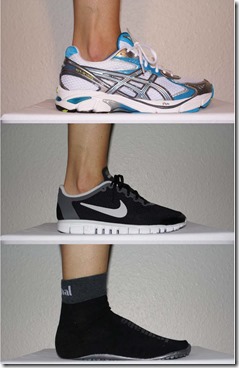 Based upon research published over the past several years, I’ve come to believe the following about the effects of footwear (or lack thereof) on running form:
Based upon research published over the past several years, I’ve come to believe the following about the effects of footwear (or lack thereof) on running form:
1. Barefoot running is different and no shoe perfectly replicates the barefoot condition. Running barefoot, particularly on a hard surface, increases the likelihood that a runner will adapt a midfoot or forefoot strike. Running barefoot will also generally result in an increased stride rate and decreased stride length.
2. Running in a shoe with no cushioning will simulate some aspects of barefoot running, but will not necessarily simulate the barefoot condition perfectly. This might in part be due to the ability of any type of sole, even one with no cushioning, to reduce friction between the foot and the ground and thus reduce plantar skin abrasion.
3. Running in a “minimal” shoe with a moderate amount of cushioning is unlikely to alter form very much, particularly foot strike. In other words, if cushioning is present, a heel striking runner is unlikely to move to a midfoot or forefoot strike.
A new study was just published on-line in the journal PLOS One that adds additional support to some of what I have written above (full text available here). Here’s the Abstract:
Comparison of Minimalist Footwear Strategies for Simulating Barefoot Running: A Randomized Crossover Study
Karsten Hollander, Andreas Argubi-Wollesen, Rüdiger Reer, Astrid Zech
Published: May 26, 2015, DOI: 10.1371/journal.pone.0125880
Abstract
Possible benefits of barefoot running have been widely discussed in recent years. Uncertainty exists about which footwear strategy adequately simulates barefoot running kinematics. The objective of this study was to investigate the effects of athletic footwear with different minimalist strategies on running kinematics. Thirty-five distance runners (22 males, 13 females, 27.9 ± 6.2 years, 179.2 ± 8.4 cm, 73.4 ± 12.1 kg, 24.9 ± 10.9 km.week-1) performed a treadmill protocol at three running velocities (2.22, 2.78 and 3.33 m.s-1) using four footwear conditions: barefoot, uncushioned minimalist shoes, cushioned minimalist shoes, and standard running shoes. 3D kinematic analysis was performed to determine ankle and knee angles at initial foot-ground contact, rate of rear-foot strikes, stride frequency and step length. Ankle angle at foot strike, step length and stride frequency were significantly influenced by footwear conditions (p<0.001) at all running velocities. Posthoc pairwise comparisons showed significant differences (p<0.001) between running barefoot and all shod situations as well as between the uncushioned minimalistic shoe and both cushioned shoe conditions. The rate of rear-foot strikes was lowest during barefoot running (58.6% at 3.33 m.s-1), followed by running with uncushioned minimalist shoes (62.9%), cushioned minimalist (88.6%) and standard shoes (94.3%). Aside from showing the influence of shod conditions on running kinematics, this study helps to elucidate differences between footwear marked as minimalist shoes and their ability to mimic barefoot running adequately. These findings have implications on the use of footwear applied in future research debating the topic of barefoot or minimalist shoe running.
Methods
In a nutshell, the study authors recruited 35 runners and had them run trials at 3 speeds (12:04 min/mile, 9:38 min/mile, 8:03 min/mile if I did the math correctly) in each of four different footwear conditions. The footwear conditions (see image at top of post) were barefoot, shoe with no cushion (Leguano), shoe with moderate cushion (Nike Free 3.0), and standard running shoe (Asics 2160). They recorded the following biomechanical variables during each trial: ankle angle at footstrike, knee angle at footstrike, stride frequency, step length, frequency of rear-foot strikes.
Results
Barefoot running was significantly different from all other footwear conditions (including the shoe with zero cushion) for three of the five variables measured. When barefoot, runners exhibited reduced ankle dorsiflexion at contact (flatter foot strike), increased stride frequency, and reduced step length. Barefoot runners still exhibited a heel strike about 60% of the time, which was similar to the zero-cushion shoe condition. In cushioned shoes, heel striking was observed about 90% of the time.
When subjects ran in the shoe with zero cushion (Leguano) they exhibited reduced ankle dorsiflexion at contact, increased stride frequency, reduced step length, and lower frequency of heel striking relative to both cushioned shoe conditions.
The cushioned minimal shoe (Nike Free 3.0) differed from the standard shoe (Asics 2160) in that the runners exhibited increased stride rate and reduced step length. Ankle angle and frequency of heel striking did not differ between the two cushioned shoes.
Knee angle at foot strike did not differ between any of the footwear conditions (barefoot included).
Commentary
The results of this study suggest a gradation of effect of running footwear on form. None of the shoes mimicked the barefoot condition perfectly, even the minimal shoe with no cushion. When barefoot, the runners had the smallest amount of ankle dorsiflexion, a higher cadence, and a shorter stride. The zero cushion shoe yielded similar results to barefoot for foot strike, and had intermediate values for ankle angle. Stride rate decreased incrementally from the zero cushion shoe to the standard shoe, and step length increased incrementally from the zero cushion to the standard shoe.
This study by Bonacci et al. found a similar reduction in stride length and increase in stride rate in the Nike Free relative to a traditionally cushioned shoe, so it does appear that a moderately cushioned shoe may induce some amount of form change in the direction of barefoot running. That being said, retention of a heel striking gait in such shoes can lead to increases in impact forces over traditional footwear. Although the importance of impact forces to injury risk remains a source of debate, it seems prudent to suggest that care should be taken when migrating toward shoes with moderate cushion.
One of the disadvantages of this study is that it looked at immediate change in runners who were not familiar with running in minimal footwear, so we can’t know for sure if changes from the standard shoe might become more apparent with time and additional adaptation to such shoes.
In my own research I have found that barefoot runners on asphalt are more likely to midfoot or forefoot strike compared to runners in the minimally cushioned Vibram Fivefingers. Combined with results from the study discussed here (and others), these findings support my belief that barefoot running is different from running in any kind of shoe, and that although a zero or minimally cushioned shoe can alter form in the direction of barefoot running, it may never perfectly simulate what happens when you take your shoes off. At the same time, running in a minimal shoe is different than running in a more traditional shoe, but it might take removal of most or all of the cushioning to elicit major changes in running form (at least in the short term).


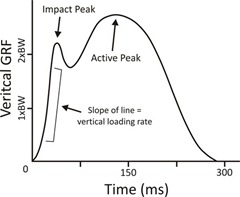
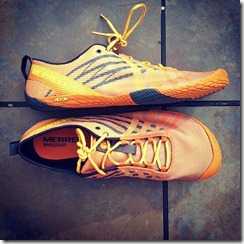
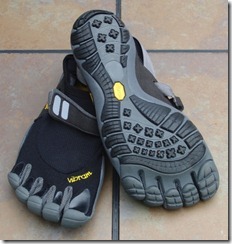
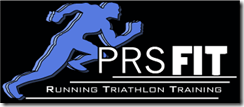














Excellent post. It brings the state of the art at the theme. Your observations seem reasonable. Let’s wait for more research in the future. Unfortunately this type of research does not allow for time to adapt to different shoes so the results may not be entirely conclusive.
I have found that a pretty easy way to mimic barefoot running style in shoes is to insist on a quicker cadence by staying with music or a metronome set at the desired tempo. I suspect this sort of exercise would not work very well for more experienced runners, as it would feel unnatural. However, for recreational runners with a poor sense of how to use their bodies, running with a steady tempo set at, oh, let’s say 180, can help reinforce more efficient movement patterns. The key for these less able athletes is that they start out with a very short stride length so that the fast cadence does not seem overwhelming.
Of course, there are many other aspects of running form that need to be taken into account to make a runner more successful and injury-free. Simply turning your feet over quicker alone is not going to do it. For amateurs, though, it might be a good place to start.
Great article. For years I tried to take up running and I couldn’t run without pain so I would give up until I got the desire again. Finally I tried the Vibram FiveFingers and now I can run with no back pain. It seems that those shoes helped me learn to run properly. I haven’t been able to condition my feet enough to run barefoot yet.
A pilot study I did with the former head of engineering and biomechanics for the US Olympic Committee showed the same thing, but with one twist:
Runners in Xero Shoes were biomechanically the same as when they were barefoot.
We supposed this was the case because of 2 factors:
1) the only thing between you and the ground was 4-6mm of rubber
2) The lack of an upper which gives mild resistance to the dorsiflexion of the toes
Sadly, he left his lab before we could fund the complete study (and, of course, had we funded it, people would have complained that the results were tainted as a result, even though the pilot study was inspired by simply SEEING this effect in runners that were in has lab prior to doing the pilot).
Peter,
Two questions:
– What is currently the best minimalist, zero-drop men’s running shoe out there (or how can I pick which one would be best for me)? (I currently have Altra Samsons, and they’re wearing out.) I can’t find on your blog anywhere where you say which shoes are currently the top dogs, either overall or in any given category. These shoes would be almost universally for road-running – although I might use them for a hike or other things occasionally. (Also, my toes don’t fit in VFFs.)
– What are the best-looking, most stylish minimalist, zero-drop men’s shoes – something I can wear with jeans, go out at night with, etc.? (I currently have the Skora Form, and it’s wearing out.)
Really appreciate your help. Eager for your thoughts.
Best,
Aaron
Barefoot and Xero shoe runner here. Even if they are only 4mm or 6mm (I’ve both types) versions, I find a noticeable difference between running in my Xero’s and bare foot when the surface in not smooth. This is even more pronounced when going downhill on course pavement or rocky trails.
Agreed! Proprioception, or spatial body awareness, is in part interpreted through skin contact with the ground. Barefoot will allow more processing of the surface on which your running. This benefit is offset, in most cases, by the desire to protect the foot from painful stimuli like rocks and sticks. It’s also interesting that archeologists have found a shoe from 12,000 years ago which was simply a flat piece of leather. Just enough to protect the foot but not massively alter body awareness.
What is the benefit and disadvantage of standard running shoes? I have run in probably 6-8 different brook trance shoes for training for 10 years now.
I don’t necessarily think their is either an advantage or disadvantage, it’s more about finding what works for you. If the Trance does the job, stick with it.